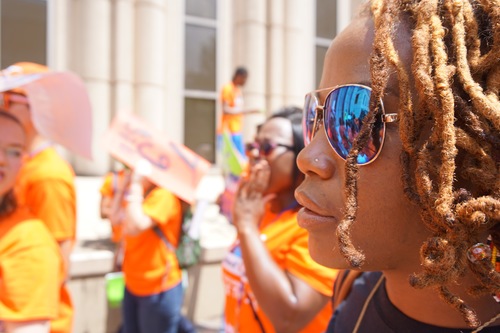Race/ethnicity: Advancing racial equity is a moral and economic imperative.
Insights & Analyses
- The proportion of people of color in the United States has increased steadily over recent decades, particularly in states with large Latinx populations like California and New Mexico.
- The Latinx population has grown the most dramatically, from 6 percent in 1980 to 19 percent in 2020. Latinx people are projected to make up 25 percent of the US population by 2050.
- The South continues to have the highest proportion of Black residents, while Western and Southwestern states have the highest proportions of Latinx and Asian and Pacific Islander residents.
Drivers of Demographic Shifts
The United States' proportion of people of color has grown dramatically in the 21st century as population growth is increasingly driven by people of color and immigrants. Communities of color, especially Asian American and Latinx communities, are now growing more rapidly than White populations. Additionally, immigration is projected to be the primary contributor to population growth by 2030. While most U.S. immigrants were born in Europe during the 20th century, this generation of immigrants are predominantly born in the Americas and Asia.
Strategies
Grow an equitable economy: Policies to leverage diversity as an asset
- Foster racial equity in governance.
- Build multiracial alliances, coalitions, and movements to advance policy change, including pro-immigrant policies.
- Dismantle barriers and build pathways to economic opportunity for boys and men of color.
- Include immigrants by ensuring access to health care, driver's licenses, in-state tuition, and municipal ID cards regardless of immigration status.
- Enact strong language access policies requiring interpretation and translation services for English-language learners and facilitate naturalization among green-card holders.
- Limit the participation of local law enforcement with Immigration and Customs Enforcement and support community-led alternatives to policing and invest-divest strategies in communities of color.
- Strengthen democracy by increasing participation of marginalized groups, expanding voting rights (and preventing rollback), and building leadership development pipelines.
- At the federal level, end the lifetime ban on public benefits for people with criminal records, ensure that releasees from federal prison receive essential identification documents and access to transitional services to support reentry, and enact all-mail elections, automatic voter registration, and extended voting periods.
Strategy in Action
The UndocuBlack Network supports unauthorized immigrants with resource sharing, community connections, and advocacy. UndocuBlack is a national network with chapters in New York City, Los Angeles, and Washington DC, offering a combination of virtual and in-person safe spaces and mutual supports for undocumented Black community members. Recently, UndocuBlack launched its Mental Wellness Initiative, given the intense distress that many undocumented residents face around their legal status and financial security. This new initiative promotes dialogue around mental wellness and destigmatization of mental health care in Black immigrant communities, and also provides resources for mental health care providers in working with undocumented Black clients. UndocuBlack members are also currently working to compile a comprehensive guide of legal, housing, financial, and educational resources for people in the network. Learn more.
Photo: UndocuBlack

Resources
- Reports: Racial Equity in Our Cities; Promising Practices and Lessons from Local Communities; Providing Identification to Unauthorized Immigrants; Improved Race and Ethnicity Measures Reveal U.S. Population Is Much More Multiracial; Growing Racial Diversity in Rural America: Results from the 2020 Census; Why a MENA Category Matters; State of Asian Americans, Native Hawaiians, and Pacific Islanders in the US; A Profile of the US Latino Population, 2000-2020
- Data: DiversityDataKids.org; Black Census Project; AAPI Data; Latino Data Hub; Our Changing Population: United States


